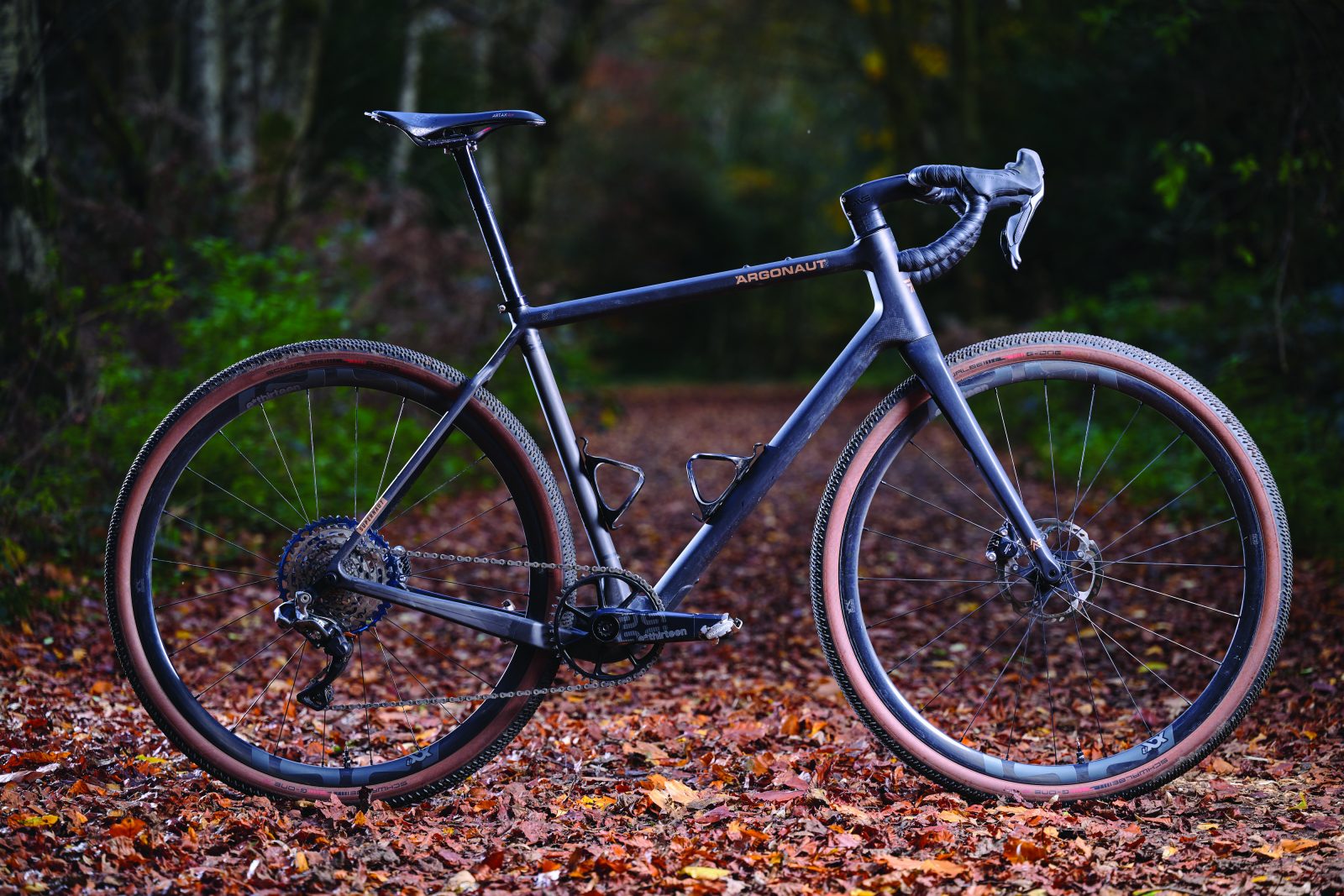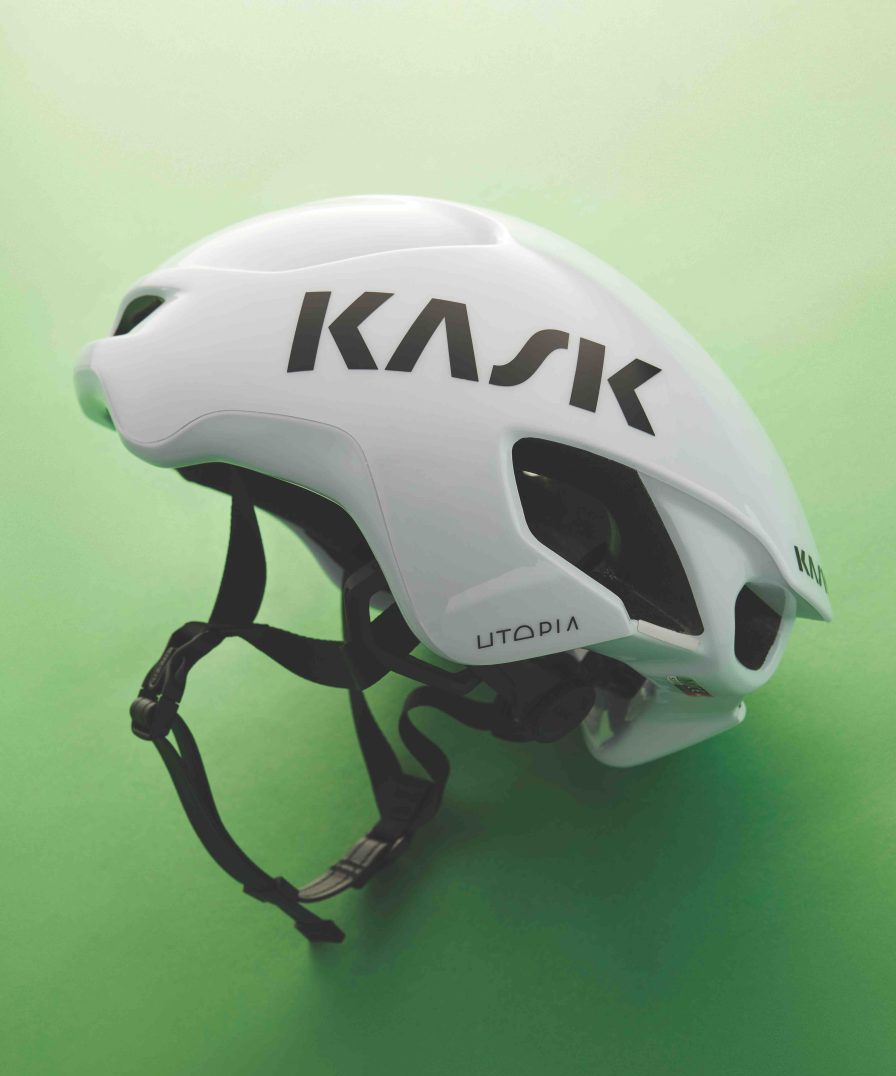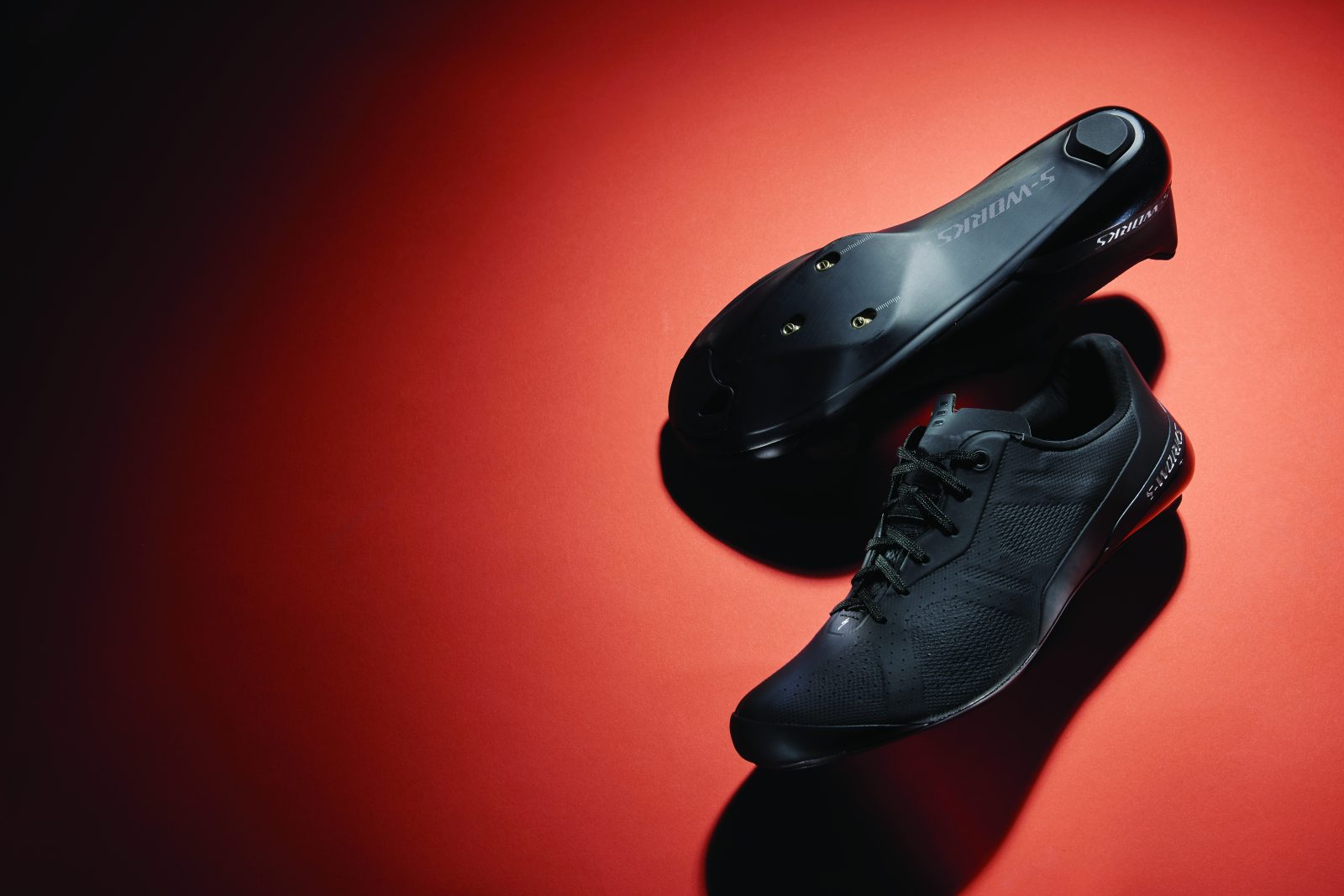The same as Argonaut’s high-end custom gravel bike… but not custom
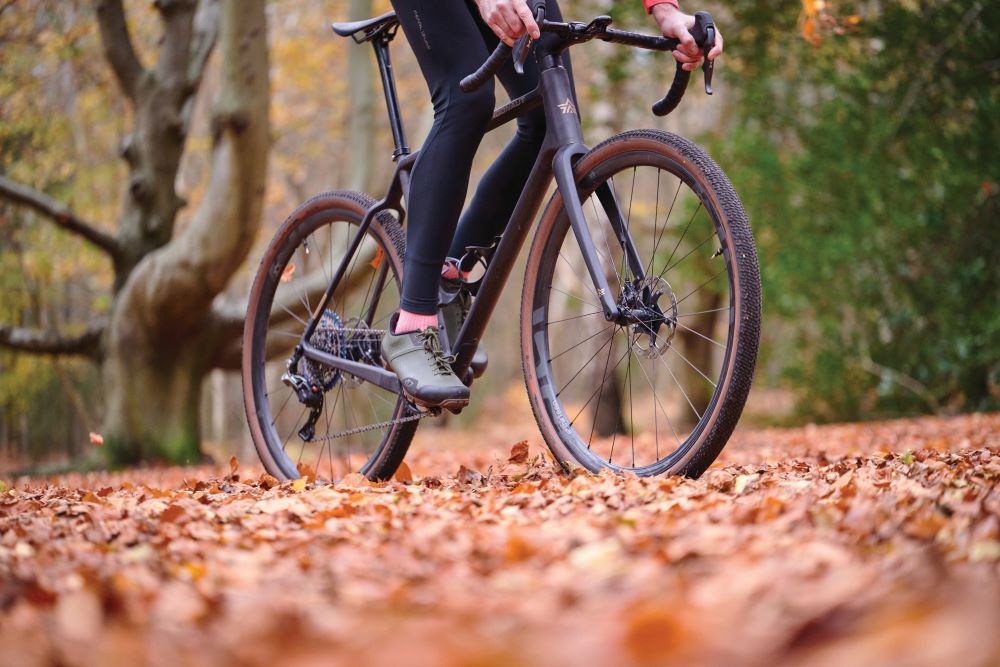
Words Pete Muir Photography Mike Massaro
The Supernaut GR3 is a gravel bike that doesn’t like to go slow. That may sound like a corny marketing slogan, but in this case it’s actually true.
The thing that most separates this bike from other gravel bikes out there is its geometry – the head tube angle is an incredibly slack 68.5°.
Most gravel bikes are between 71° and 72°, so the Supernaut’s head tube figure puts it closer to cross-country mountain bike territory and it has a very pronounced effect on the way the bike handles. At slow speeds, the front end is liable to wheel flop.
The shallow head tube angle means the front wheel wants to tip to one side or the other even with just minor movements at the handlebar.
It can make the bike feel a little unbalanced when taking your first tentative pedal strokes and requires a bit of getting used to.
It’s something that Argonaut’s head of research and development, Ben Farver, says he’s aware of, but that it’s worth it because once the Supernaut GR3 is doing what it has been built to do – careening down gravel descents at high speed – that’s when the magic happens.
All the right ingredients
Argonaut is best known as a maker of very high-end custom bikes, built to order by hand in Oregon, USA, and commanding correspondingly large pricetags.
The company’s RM3 remains one of the favourite road bikes ever tested by Cyclist’s James Spender, who described it as ‘probably the best road bike you’ll ever ride’.
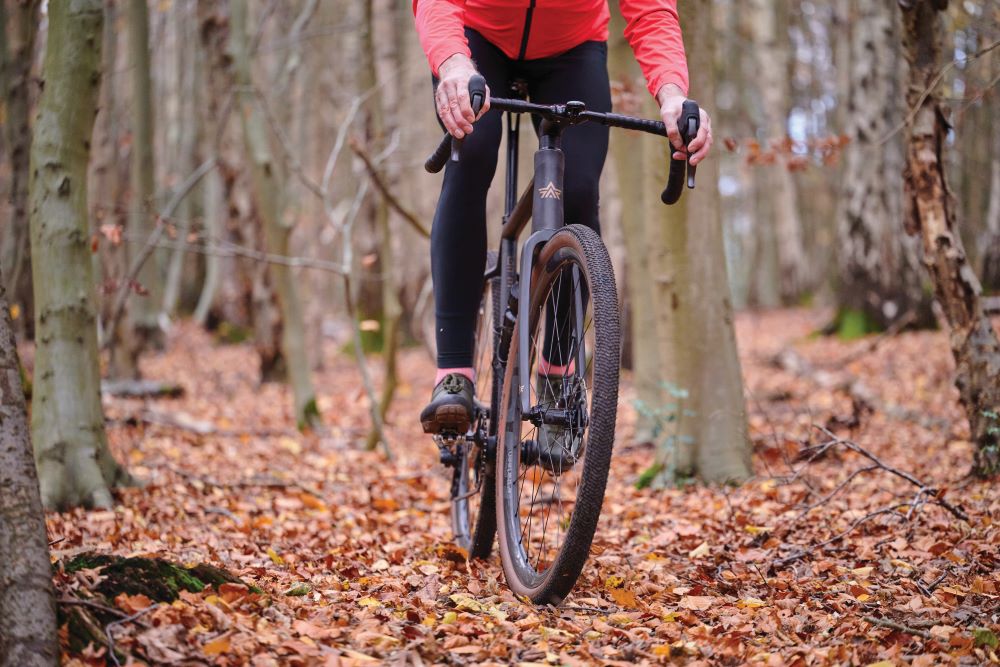
The GR3 is Argonaut’s custom gravel bike, which means that every tube angle can be adjusted to suit the rider’s dimensions, and every part of the frame can be laid up to suit the rider’s riding style.
Equally, all the components can be selected to meet the customer’s preferences, creating a bike that is unique to a particular rider. But that’s not this bike.
The Supernaut GR3 is still built by hand in Bend, Oregon, using the exact same methods as the custom GR3, only it’s not custom – the geometry, layup and components have all been decided by Argonaut in advance.
‘It’s designed from our experience over the last 10 years, sort of like the greatest hits of our layup patterns,’ says Farver
‘It’s driven by what our favourite design and parts are, like a chef’s choice. ‘It serves two solutions.
The first is that there are a lot of customers who want a really high-end bike but don’t want to jump through all the hoops or make all the decisions on getting a custom bike.
Also, I see the broader industry proposing a variety of different bikes as their argument for the ideal gravel bike, and I wanted to participate in that conversation.

I wanted us to put our hat in the ring for the best stock gravel bike at the top tier because I really stand behind the levels of complexity and engineering in our bikes.’
The complex engineering Farver alludes to includes a process called high-pressure silicone moulding, which means the frame’s carbon plies are laid up in the mould around a silicone mandrel rather than the usual inflatable bladder.
‘When you heat up the silicone it expands naturally,’ says Farver.
‘You get a really high internal pressure, upwards of 600psi where mostly, when you’re inflating a bag or bladder, you’re at 200, maybe 250psi.
What that means is that it squeezes out all the voids and the air bubbles in the part much more effectively, basically to zero.’
The claimed benefits are that the lack of voids and reduced ply distortion (plies wrinkling up as a part cures) make the frame parts stronger and lighter because more of the resin is squeezed out.
Of course, on a custom bike that means the silicone mandrels have to be made to order, adding cost.
With the Supernaut GR3 the pre-set frame shape shaves almost $4,000 off the price of the custom GR3 and means customers can get their hands on a bike in around four to six weeks, as opposed to three to four months for custom.
Playing the angles Getting back to the Supernaut GR3’s super-slack head tube angle: ‘The big difference from the broader market is the geometry,’ says Farver.
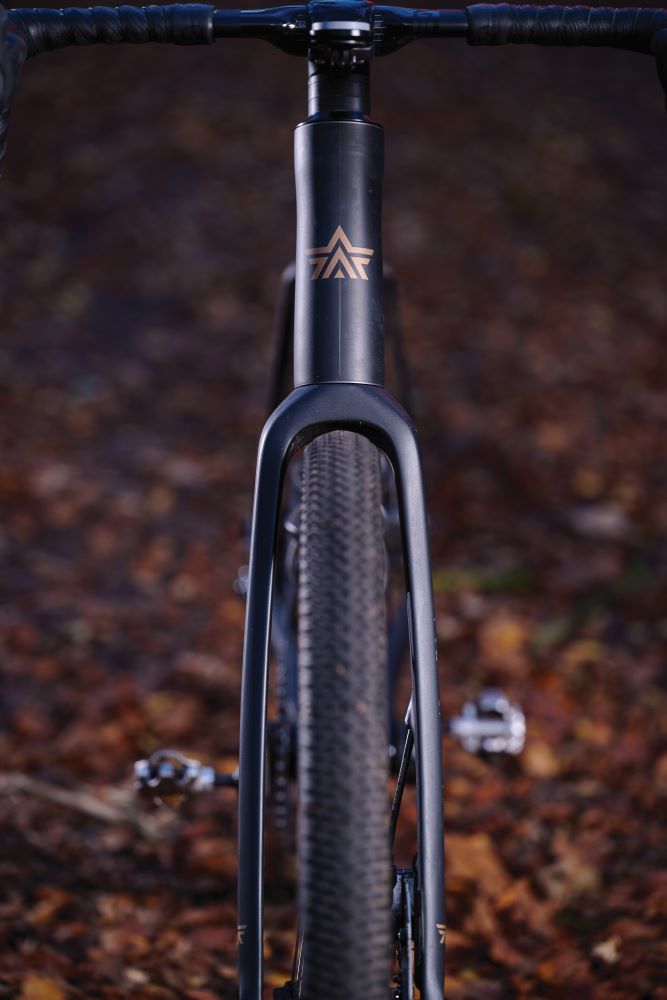
‘I would argue that it is much more gravel specific. I wanted to look at where gravel bikes are being ridden and make a bike that excels in environments where you really need it to – more along the lines of modern mountain bike geometry.
‘It’s a bike that allows you to go faster, more confidently on rough terrain.
The 68.5° head tube angle is paired with a unique 57mm fork offset to bring the trail back in to help keep the bike from feeling wandery.
Then we went to great pains to make the rear end quite short so that the bike didn’t feel like a tank going uphill.’
Certainly the chain stay length is impressively short at 415mm, considering it can accommodate 700c x 50mm tyres.
This helps to keep the bike agile in turns and acts as a counter balance to that slack head tube angle, which aims to keep the bike stable at speed, but which means (as previously mentioned) there is a bit of wobble at low speeds.
‘It definitely takes some getting used to in terms of that low-speed turning,’ responds Farver, ‘but what we’ve found from people after they’ve spent a decent amount of time on it is they adapt to the bike, and then you really get that payoff of the stability at speed.’
Getting up to speed
When I first pushed away from the kerb on the Supernaut GR3, my initial thought was, ‘Woah there, boy.’
The tendency of the front wheel to want to tip to one side was pronounced.
Imagine yourself pushing a bike along by its saddle – whereas most will happily roll forwards in a straight line, the GR3 weaved around like a drunk at closing time.
At first it was unnerving, but Farver was right, it didn’t take me long to get used to it, and only persuaded me that I needed to get the Supernaut into its natural environment, which meant finding some fast-flowing gravel.
When I did find some long, fast descents the Supernaut GR3 came alive, carving easily through turns and allowing me to hold more speed than I might otherwise have dared.
I wish I’d had the chance to take it to the high country to hurtle down some trails. It would be an absolute blast.
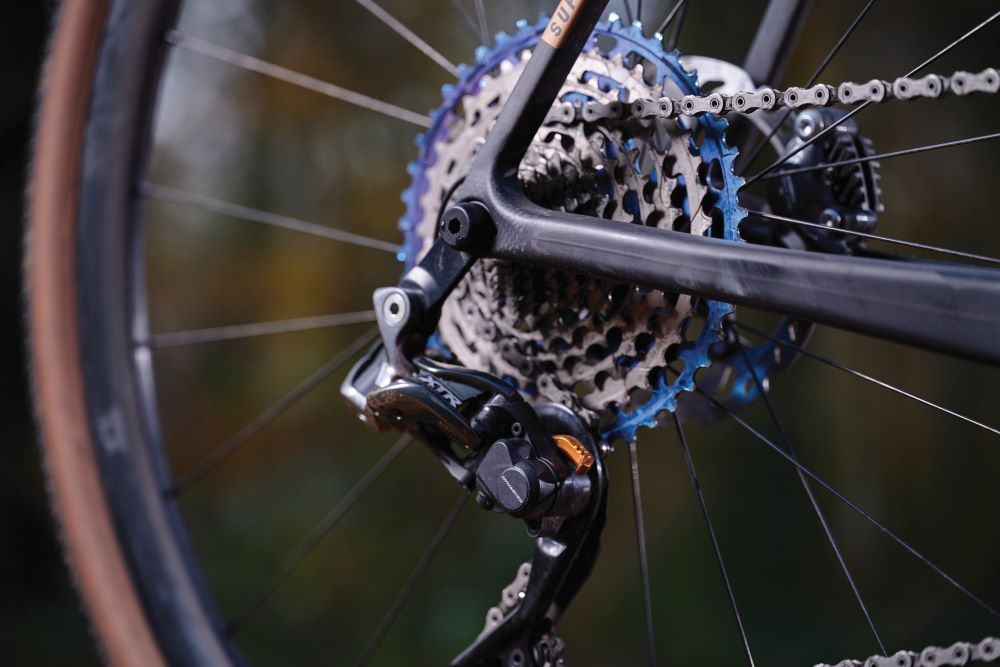
On climbs, the GR3 felt light and nimble for a gravel bike, helped by an overall weight – 7.8kg on my scales for an equivalent XL size – that would compete with many road bikes.
It was further helped by the E*thirteen 11-speed cassette that boasts an incredible 9-46t spread.
If I were a pro racer I would probably find the jumps between gears too big, but I’m not, so I was simply happy that I was never at a loss for a high enough or low enough gear.
There’s no aero profiling for the racers, nor suspension systems or frame mounts for bikepacking adventures; the focus is all on the quality of the ride.
This is a bike aimed at people who want a long, hard, fun day out.
It’s a bike that positively begs to be pushed to its limits on rides, and which promises to flatter your skills as a rider on any kind of terrain.
Just so long as you ride it fast.
THE SPEC
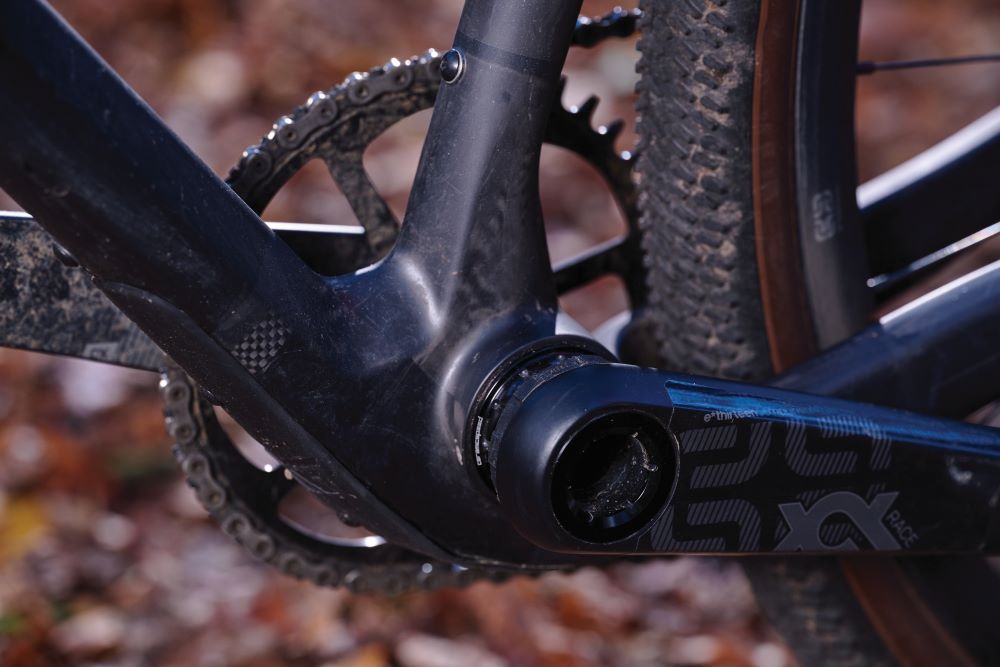
Model Argonaut
Supernaut GR3
Price US$13,000 (approx $19,600)
Weight 7.8kg (57.5cm)
Groupset Shimano GRX Di2
Deviations Shimano XTR M9050 rear derailleur, E*thirteen XCX Race Carbon Gravel crank, E*thirteen Helix Race 11-speed cassette (9-46t)
Wheels E*thirteen XCX Carbon Gravel
Finishing kit Argonaut Gravel handlebar, Enve Aero stem, Argonaut seatpost, Selle Repente Artax GLM saddle, Schwalbe G-One R 40mm tyres
Contact
argonautcycles.com
